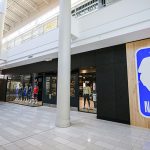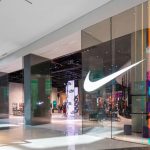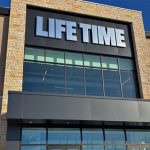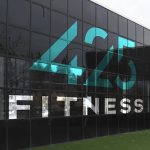Shares of Reebok International stock fell 9.1% for the week to close at $38.40 on Friday after the company pointed to a tough International business, bankruptcies at Footstar and a large Italian retailer, slower basketball and walking sales, and a branded apparel business that is in rapid decline for first quarter earnings results that fell far short of Wall Street expectations.
Reebok management is sticking to its forecast of 15% earnings growth for the year on sales gains in the mid-single-digit range despite a lackluster start to the year that showed fairly flat earnings and sales results for the first quarter. Analysts were looking for EPS growth in the six percent range, 67 cents per diluted share. The company is not expected to see upside in the second half as second quarter is expected to be “flat to down” according to Ken Watchmaker, Reebok Internationals EVP and CFO. The following chart will break down the specifics of the business in much more detail.
Still, the company appears to be making long-term investments in the future of the company that will at least pay off in the basketball category and find themselves counting on some upside from the Foot Locker acquisition of Footaction for some 2004 relief.
The Footstar bankruptcy impacted the Q1 footwear numbers in the U.S., which Reebok said would have seen a 5% to 6% increase if shipped. But the BK also gave a boost to the backlog numbers as post-bankruptcy orders valued between $17 million and $18 million are still sitting in the system. Management said that the U.S. footwear backlog would have still increased 8.0% without the Footstar orders.
Reebok clearly sees some upside with the Foot Locker deal to acquire 353 Footaction stores as they made up just 7.0% of sales there, but represent around 14% of Foot Locker purchases. Watchmaker said he expects the new Footaction presentation would be “commensurate” with Foot Lockers Reebok commitment and saw nice upside in apparel as well.
For that reason, he saw little trouble in replacing the $30 million in sales lost due to Just for Feets 2003 volume with the brand. He indicated that they could replace that volume in the “additional business were going to get from the 350 stores”, but also speculated they may see more of that volume also go to some of their mid-market retailers if the consumer moves there.
Watchmaker said that nearly two-thirds of the U.S. footwear business is now done in the athletic specialty, sporting goods, and better department store channels. Backlog for these channels is up 16% versus the 9.1% gain increase for the whole region.
The volume channel was said to be “flat” to last year, but they are “starting to see improvement” in that business.
Europe was the main drag on the International business as declines in the U.K., France, and Italy offset gains elsewhere on the Continent. The company said it saw constant dollar increases in the Adventure, Basketball, Running, and Soccer categories.
Reebok does feel it is making progress on the performance end of the business in Europe, pointing to data that show its share of the Technical Running market increased to 10% from its previous 3% share level last year, due largely from the success of the Premier series. They also claimed market share increases in Basketball in Germany, Italy, and France. The Italy business, while small, was impacted by the bankruptcy of Giacomelli, which also hit the backlog number.
The Backlog numbers in Europe were impacted by decreases in the same countries, but the company expects to see a flat U.K. business for the year on a constant dollar basis.
Reebok hopes to stem the negative tide of the business by making a number of changes in their U.K. and France management teams.
In the U.S., sales in the Basketball category were down in the quarter, but Reebok did see upside in the Above the Rim product and Rbk. Iverson product was also said to be down while the Classics Basketball business was said to be “actually pretty good”.
The company said they plan to launch a “radical shift” in the ATR product for Holiday since other brands have copied the sub-brands look. “We need to move on,” said Watchmaker.
The Basketball business has been more of a fashion focus for Reebok, but their investment in Sonny Vaccaro should give them a foothold in the performance end of the business as they affiliate the brand with his camps and he identifies up-and-coming prospects. They will need to show some patience here as Vaccaro intimated in a recently published article that the next LeBron James is probably an eighth grader right now. But he also said he saw potential to sign some of the younger NBA players since Nike has invested so much in LBJ that others may not feel much love in Beaverton. Adidas is pretty full of talent right now as well.
Reebok pointed to the Vaccaro deal and the Yao Ming deal as partial reasons for a substantial increase in SG&A expenses that impacted profits.
In Running, the company said the continue to gain important shelf space in running specialty channel in the U.S. as well, again due to their ongoing efforts with the Premier series. Sales in the category we up “strong double-digits” in the U.S. The 20% worldwide increase in the category was also credited in part for boosting the overall average selling price for footwear.
U.S. Apparel sales were again driven by Licensed Apparel as the category grew in “strong double-digits”, more than offsetting a 65% drop in the Branded Apparel category.
Watchmaker said that the replica (NFL) jersey business could be 83% fan-based this year versus 76% of the business last year. He estimates that overall Licensed Apparel sales are 75% fan-based and saw upside in league parity and new free agent signings. NBA sales grew 25% in the quarter and look to grow even more in the back half as Reebok picks up the important “swingman” category.
Watchmaker said the company does not expect revenue growth in Branded until 2005. Margins did improve in Branded as off-price and close-out business diminished.
>>> Unfortunately for Reebok, the Street doesnt talk in three to five year terms and increasingly looks for that 90-day gratification. If Reebok can hold em off while they implement their long-term strategy, the brand may be able to build some cache with the performance consumer in both Running and Basketball
>>> By our estimations, even if Q2 earnings hold flat to last year and dont decline, RBK will need to show EPS growth of more than 25% in H2 to achieve the 15% target. Second half 2003 diluted EPS grew almost 30% over 2002 H2, with 63% growth coming out of Q4












